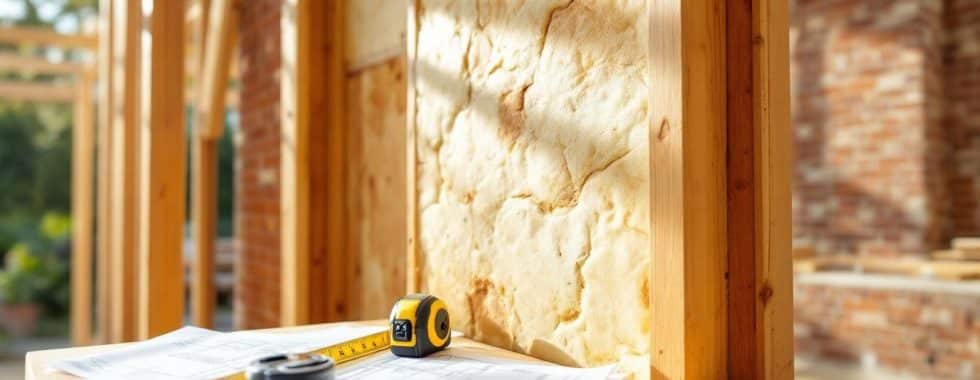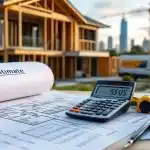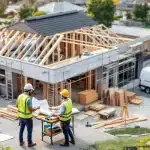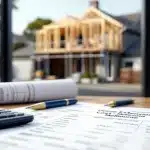How Much Does a House Extension Really Cost?
At Cameron Construction, we understand that house extension costs are a major concern for homeowners looking to expand their living space.
The price tag of an extension can vary significantly based on several key factors.
In this post, we’ll break down the real costs associated with house extensions and provide practical strategies to help you manage your budget effectively.
What Drives House Extension Costs?
Size and Complexity: The Primary Cost Factors
The size of your extension directly impacts its cost. For a brick veneer ground floor extension, costs range from $2,400 to $2,900 per m². This depends on factors like foundation requirements and other project-specific elements. Larger extensions require more materials and labour, which increases the overall expense.
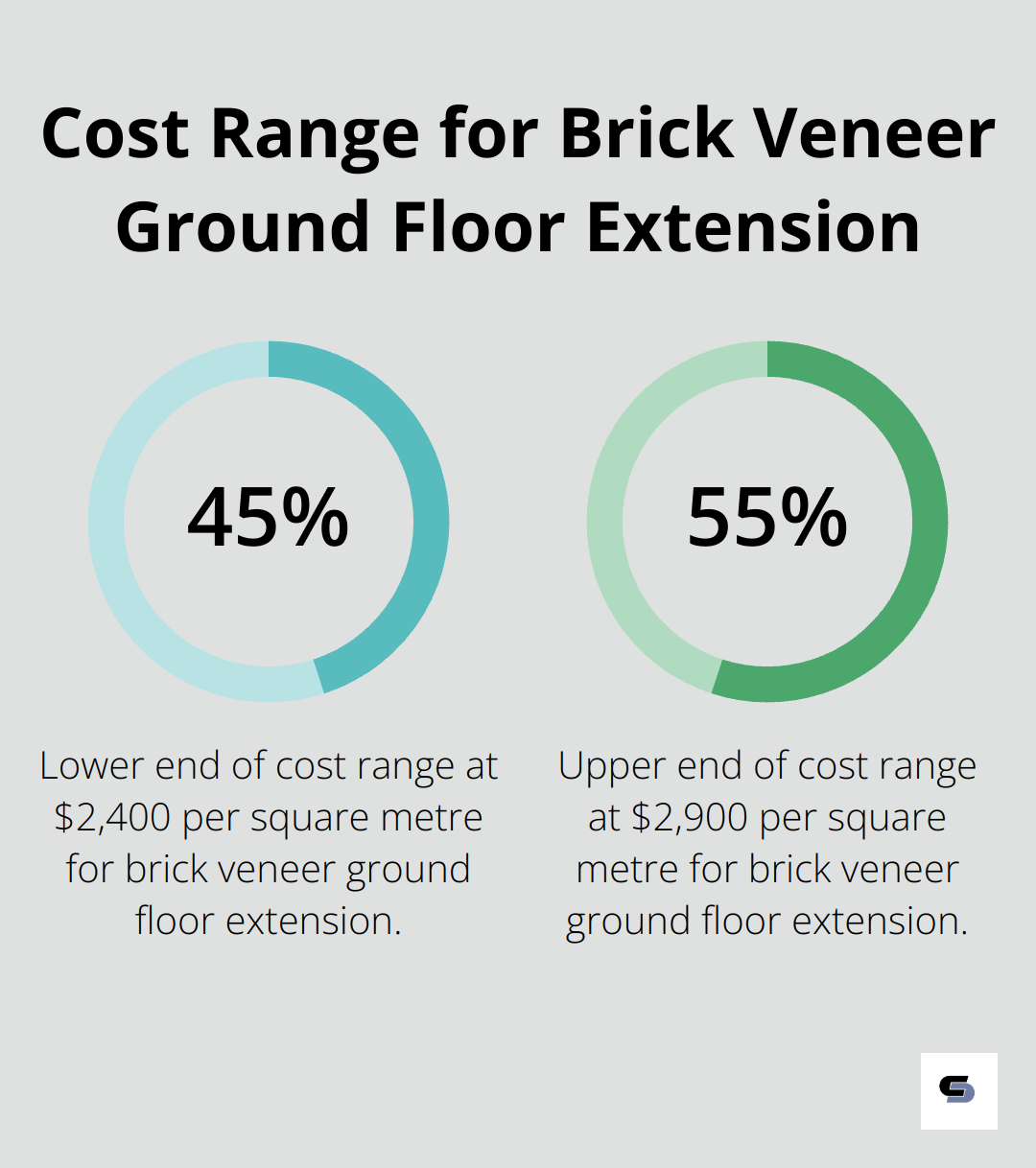
However, complexity also plays a significant role. A simple, rectangular addition costs less than an extension with multiple angles, levels, or unique architectural features.
Material Choices: Quality vs. Budget
Your choice of materials can dramatically affect the cost of your extension. High-end finishes like marble benchtops or custom-made windows will increase your budget significantly compared to standard options.
Consider these examples:
- Premium hardwood flooring instead of laminate could add to your project cost.
- High-end kitchen appliances over mid-range options could increase your budget.
Location and Regulations: Hidden Cost Influencers
Your location plays a crucial role in determining extension costs. Labour rates vary significantly across different regions.
Local building regulations also affect costs. Some areas have stricter requirements for energy efficiency or heritage preservation, which can add to your expenses. Always check with your local council about specific regulations that might impact your extension plans.
Existing Structure Condition: The Foundation of Your Budget
The current state of your home can significantly influence extension costs. If your existing structure requires substantial work to support the extension (such as foundation reinforcement or roof modifications), your budget will need to accommodate these additional expenses.
Professional Guidance: Maximising Value
While it’s possible to plan an extension yourself, professional guidance can help you navigate these cost factors effectively. Membership of Master Builders is a stamp of quality, demonstrating that a builder values high standards of skill, integrity and responsibility to its clients.
Understanding these factors allows you to make informed decisions and potentially find areas where you can optimise your spending. In the next section, we’ll break down the specific costs associated with house extensions to give you a clearer picture of where your money goes.
What Does a House Extension Really Cost?
Design and Planning Expenses
The initial phase of your extension project involves design and planning, which typically accounts for 5-15% of your total budget. This includes architectural drawings, structural engineering plans, and any necessary surveys. Investing in quality design can prevent costly mistakes during construction.
Construction and Labour Costs
Construction and labour form the bulk of your extension expenses, often ranging from 40-60% of the total cost. This covers everything from site preparation to the final touches. Labour costs vary significantly by region and the complexity of the project. In Melbourne, skilled labour for home extensions can cost between $85 to $150 per hour, depending on factors such as the type of project, location, and specific requirements.
Materials and Fixtures
Materials and fixtures usually make up 30-40% of your extension budget. This category includes everything from bricks and timber to windows, doors, and internal fittings. The quality of materials you choose can significantly impact both the cost and the longevity of your extension. For example, double-glazed windows might increase your upfront costs but can lead to long-term savings on energy bills.
Additional Expenses to Consider
Don’t forget to factor in additional expenses, which can add up to 10-20% of your budget. These include council permits, building inspections, and insurance. In Melbourne, a planning permit for a house extension can cost anywhere from $1,000 to $2,000 (depending on the project’s scope). It’s also wise to set aside a contingency fund of about 10% of your total budget for unexpected issues that may arise during construction.
Making Informed Decisions
Understanding these cost components allows you to make informed decisions about where to allocate your budget. While it’s important to manage costs, cutting corners on quality can lead to higher expenses in the future. Try to focus on delivering value through quality workmanship and materials, ensuring your extension is a worthwhile investment in your home’s future.
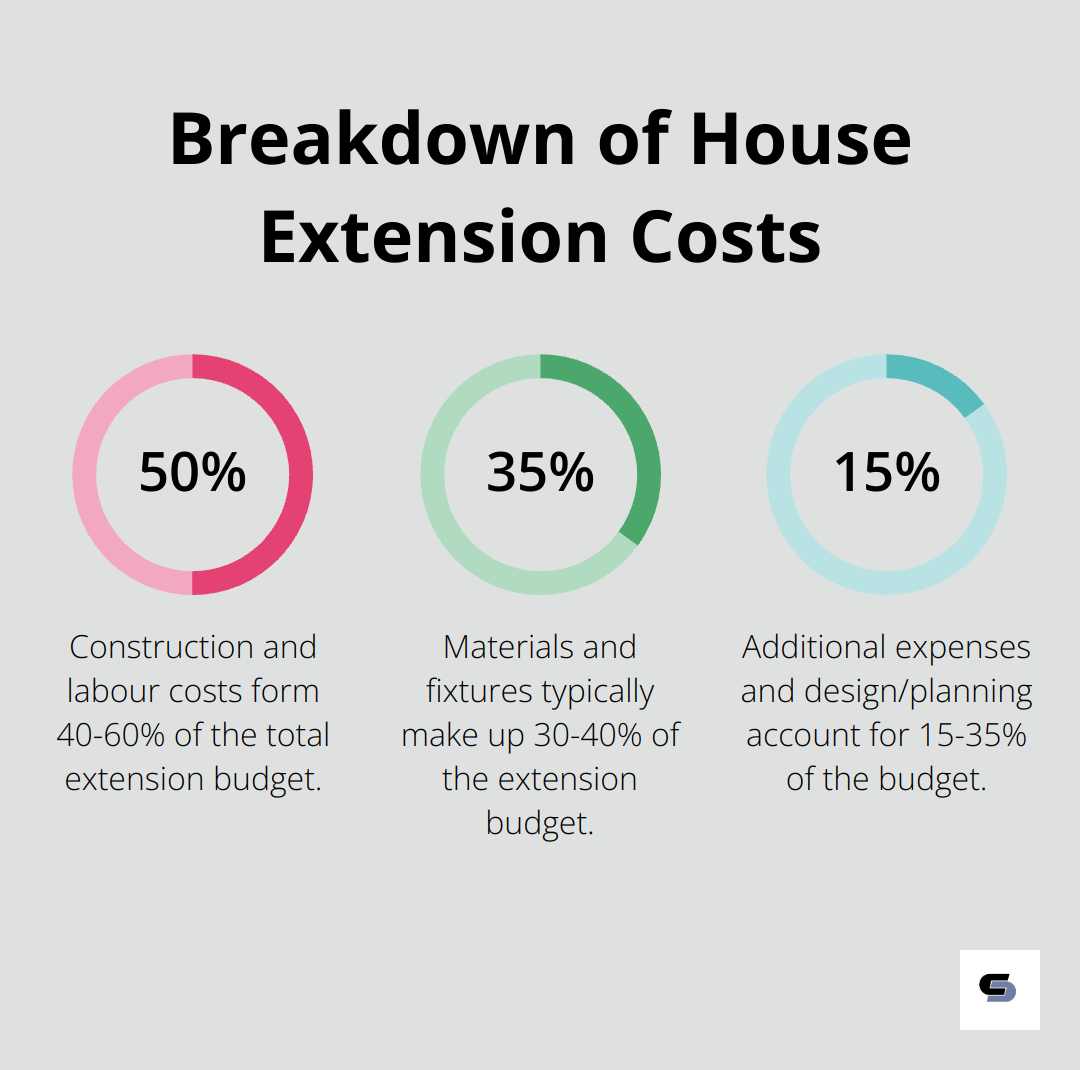
Now that we’ve broken down the costs, let’s explore some strategies to help you save money on your house extension project without compromising on quality.
Smart Savings for Your House Extension
Optimise Your Design
A well-planned design can reduce costs without compromising quality. Open-plan layouts make spaces feel larger without increasing square footage. The Housing Industry Association reports that open-plan designs can cut construction costs by up to 15% due to fewer internal walls and doors.
Choose Materials Wisely
The right materials balance cost and quality. Engineered wood flooring can cost about 75% of solid hardwood when installed while maintaining a high-end look. For external cladding, fibre cement weatherboards offer durability at a fraction of the cost of natural wood siding.
Time Your Project Strategically
The start date of your project can impact costs. Many builders offer discounts during off-peak seasons (typically winter months). Starting your project in winter could mean more contractor availability and potentially lower rates. However, weather conditions might affect the construction timeline.
Implement a Phased Approach
Budget constraints? Break your extension project into phases. This strategy allows you to spread the cost over time and potentially save on interest (if you’re financing the project). Start with structural work and basic finishes, then add high-end fixtures and fittings later when funds allow.
DIY with Caution
While DIY can save money, it’s not always the best choice for extension projects. Complex tasks like electrical work, plumbing, and structural changes require professional expertise. You can save on labour costs by taking on simpler tasks such as painting or basic landscaping. However, mistakes in DIY work can lead to costly repairs.
Seek Professional Guidance
Professional advice can help you navigate cost-saving measures effectively. Experienced builders (like Cameron Construction) can guide you through these strategies while ensuring your extension meets the highest standards of quality and compliance. Their expertise can help you avoid costly mistakes and maximise the value of your investment.
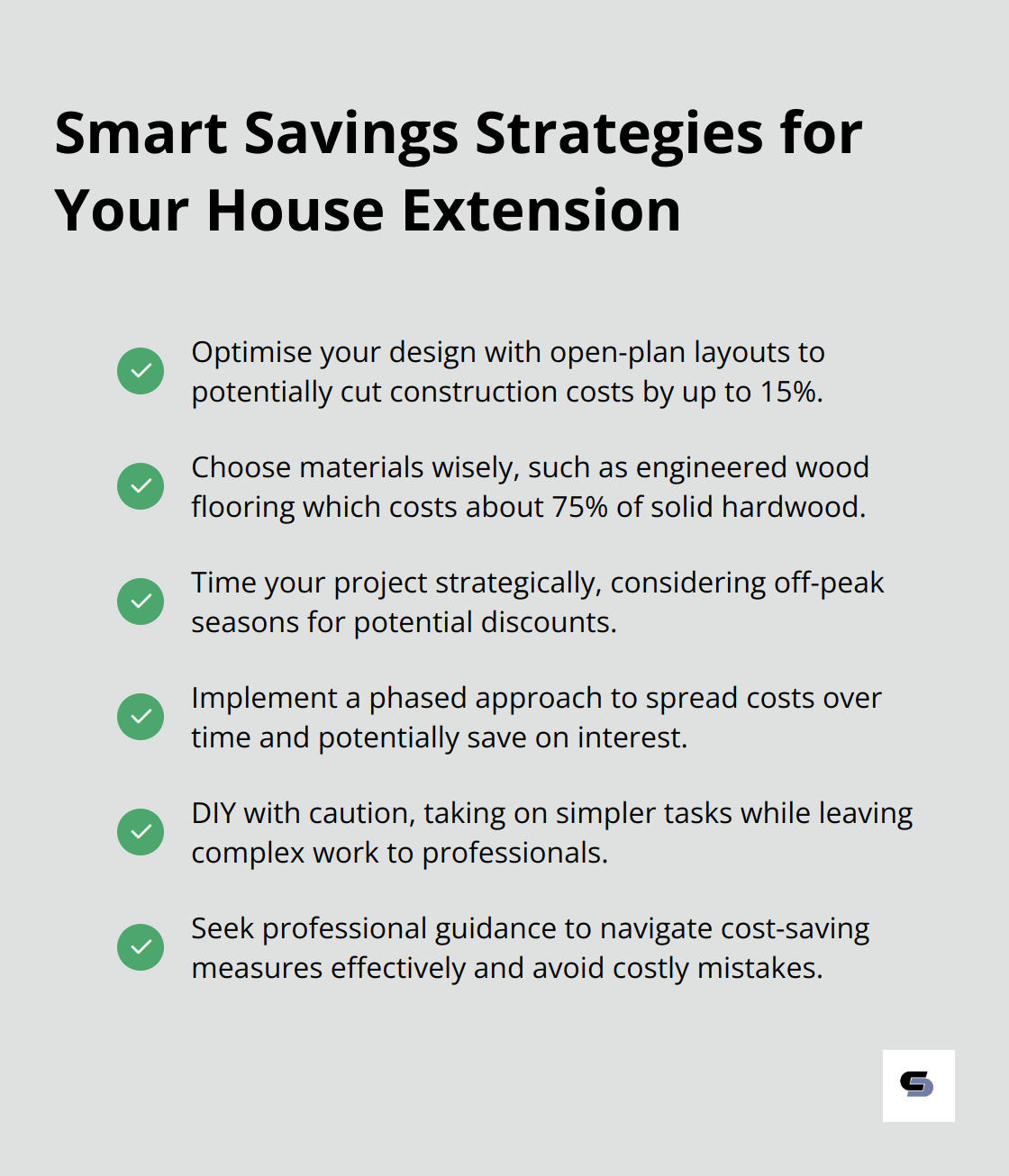
Final Thoughts
House extension costs depend on various factors such as size, materials, and location. A thorough understanding of these elements allows homeowners to budget effectively and make informed decisions about their investment. Professional planning and careful consideration of needs help avoid unexpected expenses and ensure the extension meets expectations.
Quality should not be compromised when managing costs. Homeowners can optimise their design, choose materials wisely, and consider a phased approach to balance budget constraints with desired outcomes. Expert guidance proves invaluable throughout the extension process, helping navigate complexities and providing tailored solutions.
Cameron Construction offers expertise in home renovations and extensions in Melbourne. Their team of professionals can provide solutions that align with your vision and budget. A well-planned extension enhances your home, improves functionality, and potentially increases property value.

